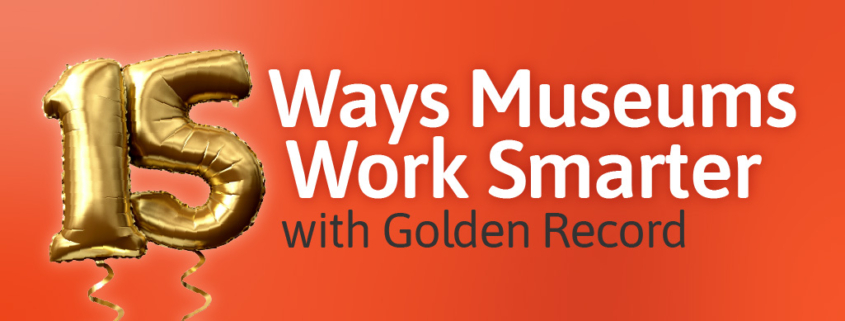15 ways integrated constituent data helps your museum work smarter (and makes your job easier).
Every museum has a story about a time their data (or lack of it) seriously let them down. In one real-life example from a client, a prominent donor filed two separate complaints with a museum’s call center. The calls were logged, but that information wasn’t easily available to other departments. Unknowingly, the development team reached out to ask for a new gift before the donor’s concerns were addressed. As you can imagine, this honest mistake temporarily made a few peoples’ lives miserable and risked the institution’s relationship with a key donor. Frustratingly, all the information was there to prevent the mishap, but it wasn’t being leveraged to help the museum staff do their work.
The way many institutions handle their data is akin to a file cabinet. It’s filed away in one closed-off location until it might be needed later. The department where the file cabinet is located has easy access and uses it every day. However, others at the institution have to go to that location and hunt it down if they need it, not to mention if they even know it exists. In our example above, the development officer would have had to preemptively know to check in with the call center before contacting the donor.
Modern data management practices don’t treat information as merely something to be filed away and accessed as needed. Instead, data is seen as a flowing resource that can be tapped into to make your job easier and more efficient. When you get your data flowing between systems and into an analytics engine, you can do some amazing things.
Here are 15 examples of how integrated constituent data and analytics can help museum teams do their jobs better, foster happier constituents, and increase engagement across the board.
Effortlessly provide outstanding customer service.
When you integrate data across several departments, you can empower your entire team to be proactive in their ability to support their constituents.
- Send an automated text alert to your development team as soon as a key donor scans their membership card at the entrance.
- Email a thank you to members after they visit, including a request for feedback or a special offer based on their engagement.
- Personally invite constituents to upcoming special exhibits or events that align with their past engagement.
- Notify patrons with food restrictions of new menu items that fit their past purchases, such as vegan or gluten-free offerings.
- Eliminate the nuisance of over-communication and duplicated marketing efforts.
Take the guesswork out of planning events, programs, and campaigns.
When you track lifetime customer value, engagement metrics, and cohorts, you gain game-changing insights into what motivates your constituents.
- Plan your next fundraising event to encompass the elements you know drive donations, both immediate and long-term.
- Segment email campaigns so that the messaging appeals to each constituent’s specific interests based on their past engagement.
- Launch new programs designed to engage groups you’ve identified as underrepresented in your constituency.
- Identify the types and frequency of engagement that lead kids to become members as adults.
- Create realistic and achievable growth targets for membership and development, boosting success and morale.
Clearly show how institutional efforts advance the mission.
Tie it all together, and you’ll finally have the full picture of your mission’s reach in your constituency and the community.
- Provide board members and donors with hard data showing how their contributions directly impacted mission-driven objectives.
- Help collections plan for acquisitions that will best advance the institution’s mission by mining engagement metrics like dwell time and attendance.
- Directly tie community outreach programs and events to increased visits and engagement.
- Understand how your mission resonates with your constituents throughout their lifetime by analyzing customer journeys and lifetime value.
- Improve overall institutional efficiency and efficacy when you break down the silos between membership, development, and marketing.
What could your constituent data be doing for you?
This is only a taste of what museums and cultural institutions can do once they put their constituent data to work. While the possibilities are endless, what you can achieve at your institution will depend on what data you collect. With Golden Record as a solution, you’re not limited to specific systems—you don’t have to change platforms or invest in an all-in-one package. And your ability to integrate and analyze constituent data will grow with your institution. Once you start leveraging your institutional data, you’ll find more and more ways to get value from it.
Contact us today to explore how your institution can work smarter with integrated data.


